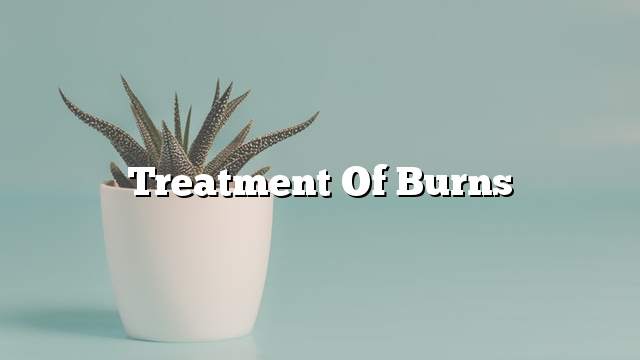Burns
Burns means the death of the tissues of the affected body as a result of their destruction by heat, sunlight, chemicals, or radiation (Radiation), one of the most common injuries to people, especially children in their homes.
Treatment of burns
The burns are treated according to their degree and the treatment statement is as follows:
Treatment of minor burns
To treat mild burns, the following tips can be followed:
Treatment of severe burns
Serious burns pose a risk to the casualty, so emergency calls must be made as soon as possible, and some actions can be taken pending emergency:
- Remove the casualty as much as possible from the cause of the incineration, taking into account not to remove the clothes attached to his body.
- Checking signs of blood circulation such as breathing, coughing, or movement. In the absence of signs that the circulatory system is safe, the paramedic can perform cardiopulmonary resuscitation (CPR).
- Remove jewelry, accessories, and clothing around the affected area, because burns cause rapid swelling of the affected area, as well as remove these pieces from vital areas such as neck and waist.
- Raise the affected area to a higher level of the heart if possible.
- Cover the burned area with a clean piece of clothing, or with a damp, cool bandage.
- Do not sink severe and large burns with cold water, because this will put the patient at risk of low body temperature and low blood pressure.
Types of burns
Depending on the temperature of the incinerator and the period of time in which the surface remains exposed to incineration, burns can be classified according to their depth to the following types:
